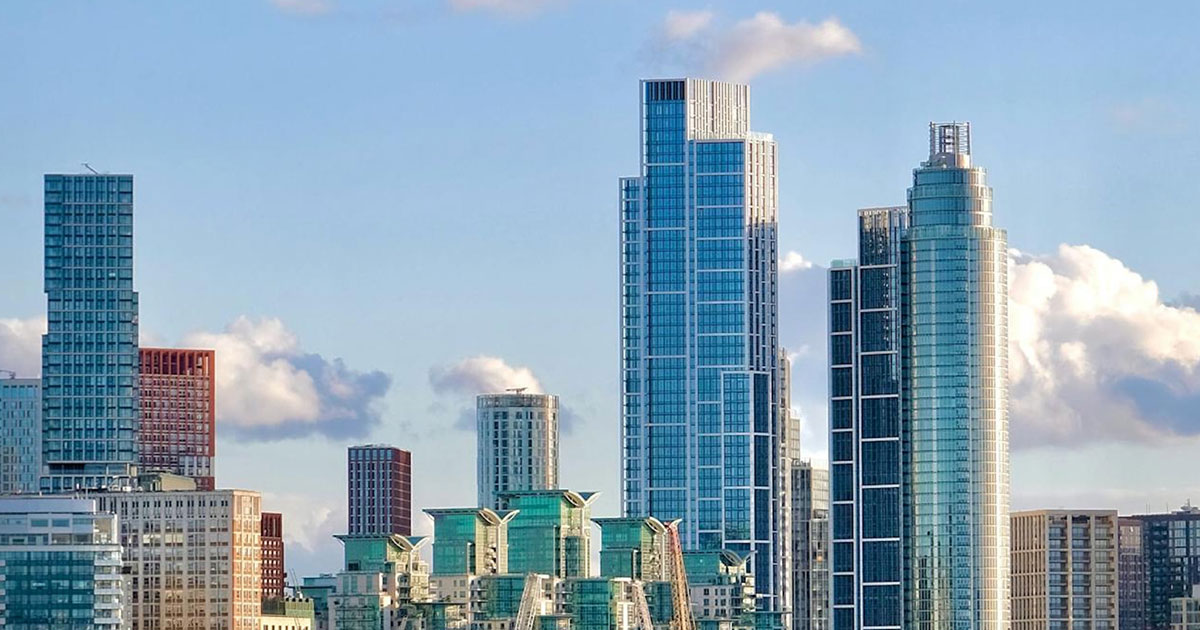Building Safety Act 2022 – key information for leaseholders

The Building Safety Act 2022 aims to ensure that works to remedy safety defects in high-rise buildings are carried out and that leaseholders are protected from the costs of the works insofar as possible. The majority of the leaseholder protections came into force on 28 June 2022. If you are a leaseholder of a high-rise building, it is worth understanding how they affect you.
This note provides key information to help you navigate the rules and regulations and sheds light on how the Act is working to protect you and how it may work in future.
Are you a qualifying leaseholder?
The Act seeks to protect leaseholders from landlords passing on the costs of necessary remediation works via the service charge. The level of protection will differ depending on whether or not you are “a Qualifying Leaseholder”.
You will be a Qualifying Leaseholder if your lease meets the following criteria:
- it is a long lease (more than 21 years in length) of a single dwelling within a Relevant Building;
- you are liable to pay a service charge under the lease;
- it was granted before 14 February 2022; and
- on 14 February 2022:
- the dwelling was your only or principal home; or
- you did not own more than 3 dwellings in the UK in total.
Are you protected from remediation costs?
Protections for qualifying leaseholders
If you are a Qualifying Leaseholder, the following costs cannot be passed on to you via the service charge:
- historical safety remediation costs where the developer responsible for the defect is, or is associated with, your building owner;
- historical safety remediation costs where the landlord as at 14 February 2022 met the Contribution Condition;
- historical safety remediation costs where your property is worth less than £325,000 in Greater London or £175,000 elsewhere in England;
- unsafe cladding remediation costs (i.e., the removal or replacement of something that both a) forms the outer wall of an external wall system of your building and b) is unsafe);
- legal or associated professional services costs relating to liability for relevant defects.
Costs that may be passed on to you via the service charge (up to a capped amount and according to the terms of your lease) include:
- waking watch costs;
- remediation of non-cladding defects, for example:
- replacement of a fire door that has prematurely degraded and is no longer safe;
- installation of missing fire compartmentation.
Any protections which apply will automatically transfer to any future buyers of the lease. This means that if your property was eligible for the protections on 14 February 2022 and you sell it, your buyer also benefits from those protections (and vice versa).
Protections for non-qualifying leaseholders
If you are a Non-Qualifying Leaseholder, the position is less favourable, although the landlord still won’t be able to pass on historical remediation costs (including the cost of fixing or replacing any unsafe cladding) where the developer responsible for the defect is, or is associated with, your building owner.
If the costs don’t fall in this category then you may be asked to contribute to remediation costs according to the terms of your lease. Before your landlord does pass these costs on to you, it has to try to obtain government funding, and it may also be able to claim some of the costs back from responsible third parties. It is important to note that the costs passed on to you cannot be increased to replace money that Qualifying Leaseholders are not liable for.
Landlord and leaseholders certificates
The legislation introduces a certification procedure, which is intended to ensure that the parties have the information required to understand who is liable for remediation costs.
Leaseholder’s Deed of Certificates
To demonstrate whether you are a Qualifying Leaseholder and to enable your landlord to work out any capped contributions for non-cladding remediation works, you need to provide your landlord with a Deed of Certificate.
You can do this at any time, or when your landlord asks you to provide one.
Landlord’s Certificates
Before it can pass on any remediation costs, your current landlord (defined as a person who is a landlord under a lease of premises in a Relevant Building) must complete a Landlord’s Certificate. It will demonstrate whether the landlord of your lease on 14 February 2022 met the Contribution Condition and whether at that date any of the landlords in the building were, or were associated with, the person responsible for a relevant defect.
There are certain ‘trigger events’ following which your landlord must provide you with a:
Landlord’s certificate:
- when they want to pass on remediation costs to you through the service charge;
- within 4 weeks of receiving notification from you that you are selling your property;
- within 4 weeks of them becoming aware of a relevant defect which was not covered by a previous Landlord’s Certificate;
- within 4 weeks of you requesting one;
- within 4 weeks of becoming aware of a new leaseholder’s Deed of Certificate which contained information that was not included in a previous Landlord’s Certificate.
If your current landlord does not provide a valid Landlord’s Certificate they will be unable to pass remediation costs on to you.
What protections will be in place for the future?
There are various rules in place to protect occupants of new and existing Higher-Risk Buildings against building safety risks in future, and it is expected that these will be supplemented by additional legislation shortly.
Accountable person(s)
The legislation creates the roles of the Accountable Person(s) and the Principal Accountable Person (PAP). They will together manage the building safety risks in each Higher-Risk Building.
The PAP of an existing Higher-Risk Building was required to register the building with the BSR by 1 October 2023. It is now an offence for the building to be occupied but not registered.
It is expected that further secondary legislation will come into force soon which will add to and define the obligations placed on the Accountable Person(s) and PAP.
Expected Implied Lease Terms
It is also expected that, in due course, legislation will amend various elements of the 1985 Act, by implying terms into leases of dwellings in Higher-Risk Buildings. The amendments are expected to place obligations on both landlords and leaseholders and amend the service charge provisions in some cases.
Expected Implied Terms for Landlords
- Where the landlord is an Accountable Person for a Higher-Risk Building, to comply with its building safety duties.
- To co-operate with any person in connection with a “relevant person” who is complying with their building safety duties.
- Where a special measures order in relation to a Higher-Risk Building is in force, to comply with that order so far as it relates to the landlord.
Where a covenant or agreement purports to exclude or limit these obligations on the landlord, that covenant or agreement will be void. If an agreement seeks to impose a penalty or obligation on the leaseholder for enforcing a landlord’s obligations under the 1985 Act this will also be void.
Expected implied terms for leaseholders
In addition to implied terms for landlords, the Act is also expected to introduce a number of implied terms into a qualifying lease for leaseholders. These include the following:
- To allow the landlord, an Accountable Person or a special measures manager (or anyone authorised in writing by them) to enter the premises for a relevant building safety purpose, which includes:
- inspecting the premises in connection with their building safety duties;
- carrying out works to the premises that are required to comply with building safety duties. “Works” is defined as including alterations, improvements, and installations; and
- accessing a part of the building that is not let to a leaseholder to inspect or carry out works to that part of the building.
- If the leaseholder is a resident in a Higher- Risk Building, it is expected that the Act will imply various duties on leaseholders aimed at ensuring that their conduct does not result in building safety risks materialising and ensuring co-operation with the Accountable Person(s) and PAP.
- To ensure compliance with any special measures order made, insofar as the order relates to that leaseholder.
If any covenant or agreement purports to exclude or limit these obligations, that covenant or agreement will be void.
Implied terms re service charge
The Act also operates to amend the service charge provisions in a relevant lease (being a lease of 7 years or more under which a service charge is payable, and which is not a relevant social housing tenancy) of residential premises in a Higher-Risk Building.
These allow the costs to include the taking of “building safety measures” by, or on behalf of, a landlord or superior landlord who is also the Accountable Person, or a special measures manager. These can include the costs of applying for the building to be registered, and other costs associated with the managerial requirements of the Accountable Person(s) and PAP. Any costs resulting from non-compliance with the rules will not be recoverable.
What can I do if my landlord is not carrying out necessary works?
- There are steps which leaseholders can take to ensure that their landlord undertakes any necessary remediation works.
- Leaseholders can apply on their own, or as a group, to a Tribunal for a binding remediation order which requires landlords/building owners to remediate building safety defects.
- Leaseholders can also apply for a remediation contribution order which will require a company to make payments in connection with the remediation of building safety defects. The application can be made alongside an application for a remediation order or as a standalone application.
Conclusion
The Act has widespread ramifications and is a complex piece of legislation. A central part to understanding the obligations arising from the Act is the correct identification of whether leaseholders have a qualifying lease, or if the building is a Higher-Risk Building. Legal advice is likely to be needed.
The statutory criteria relating to the Accountable Person or PAP is strict so a third party cannot volunteer for those roles. Outsourcing of the role will not absolve the actual Accountable Person or PAP from liability.
| 1985 Act | Landlord and Tenant Act 1985 |
|---|---|
| Accountable Person | 1. An owner of any part of the common parts (an estate owner) but not if either: each long lease of which the estate owner is lessor provides that another person (who does not own any part of the building) is under a repairing obligation in relation to the common parts (e.g. a management company); or the repairing obligations in relation to the common parts are functions of an RTM. 2. A person who is not an owner of any part of the building, but who is under a relevant repairing obligation in relation to any part of the common parts. |
| Act | Building Safety Act 2022. |
| Contribution Condition | A landlord met this if it had a net worth of more than £2 million per each Relevant Building in their ownership on 14 February 2022. |
| Higher-Risk Building | A building which is at least 18 metres in height (or has at least seven storeys) and contains at least two residential units. This includes student accommodation. Does not include care homes, hospitals, secure residential institutions, hotels, military barracks and living accommodation for military personnel. |
| Landlord’s Certificate | A standard form certificate demonstrating whether the landlord of your lease on 14 February 2022 met the Contribution Condition and whether at that date any of the landlords in the building were, or were associated with, the person responsible for a relevant defect. |
| Non-Qualifying Leaseholder | A leaseholder who is not a Qualifying Leaseholder. |
| PAP (Principal Accountable Person) | If there is more than one Accountable Person, the PAP is: The Accountable Person who holds a legal estate in possession in the relevant parts of the structure and exterior; or A person who is within the scenario above because of a relevant repairing obligation in relation to the relevant parts of the structure and exterior of the building. |
| Qualifying Leaseholder | A leaseholder meeting the test set out under the heading “Are you a Qualifying Leaseholder” in the text above. |
| Relevant Building | A building of above 11 metres or at least 5 storeys. |






